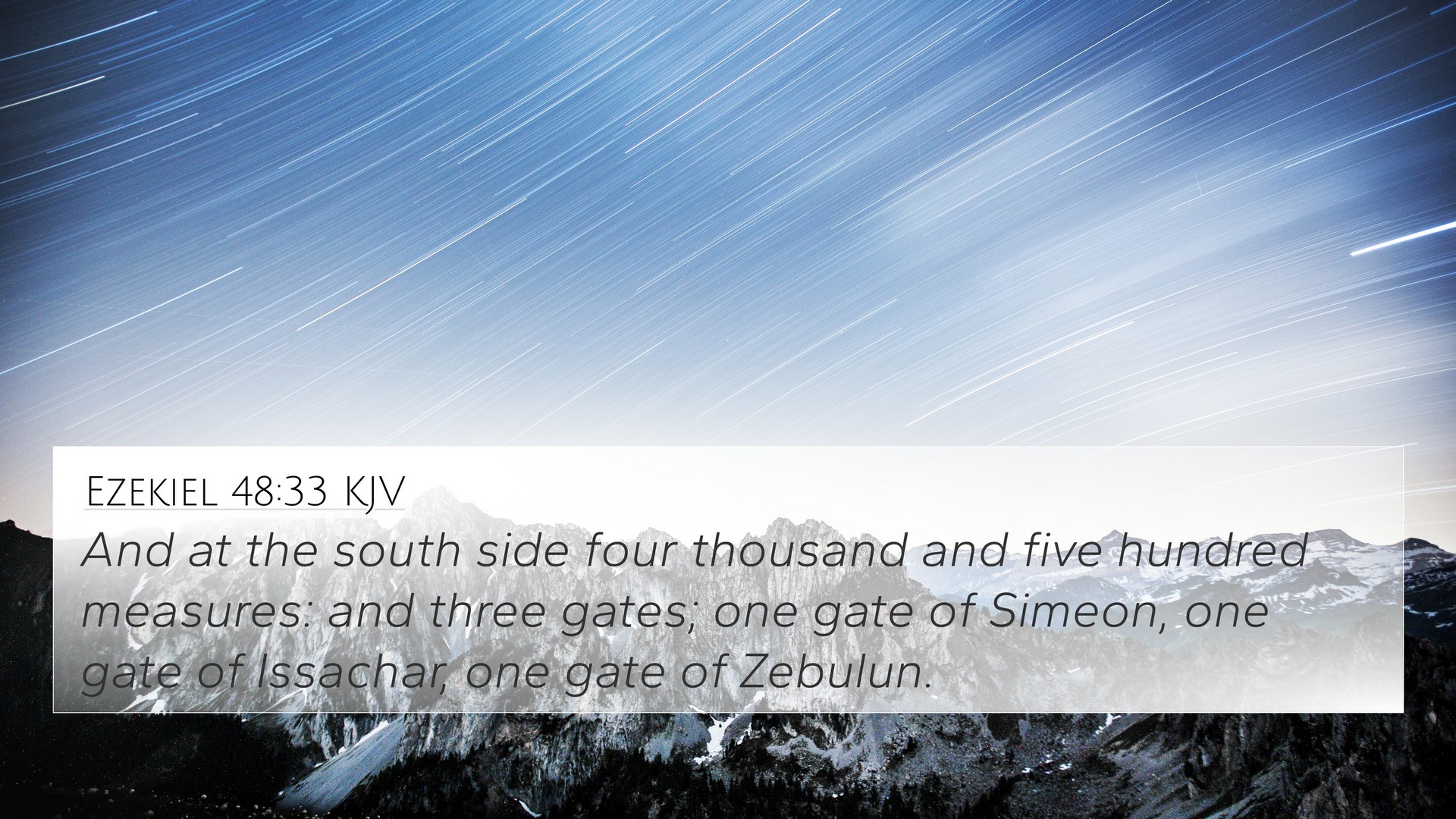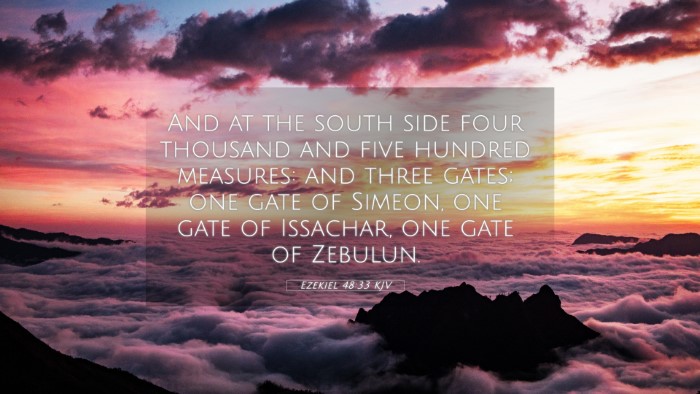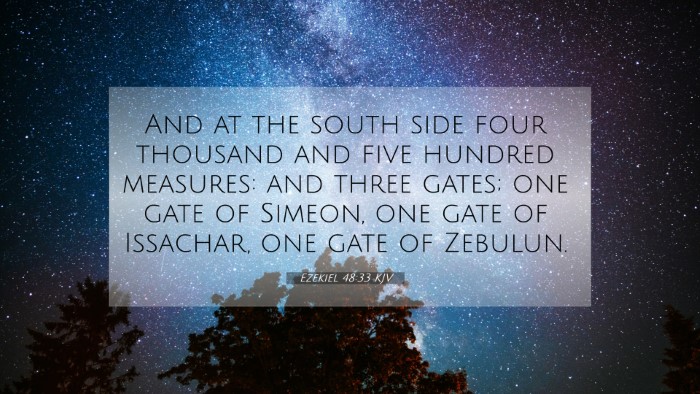Ezekiel 48:33 - Understanding the Verse
Ezekiel 48:33 states: "And at the western border, along the lines of the tribes of Judah, shall be the gate of the city, according to the twelve tribes of Israel: three gates; one gate for Joseph, one gate for Benjamin, and one gate for Dan." This verse is significant in the broader context of Ezekiel's vision of the restored Israel and the new temple.
Verse Meaning and Interpretations
The verse emphasizes the geographical and spiritual arrangement of the tribes of Israel in the new order established by God. It highlights several key themes important for understanding its implications.
- The Unification of Israel: The division into tribes reflects God's promise of unity among the people despite past divisions and captivities.
- Significance of the Gates: Each gate is representative of the tribes and stands for the individual's access to God. The arrangement symbolizes God selecting His people in a specific, meaningful order.
- Tribal Identity: The mention of specific tribes underscores the importance of identity within God’s plans. Joseph, Benjamin, and Dan showcase the variety within God's chosen people.
Cross-References to Enhance Understanding
This verse connects with several others throughout the Bible, establishing a rich tapestry of themes. Here are some relevant cross-references:
- Revelation 21:12: References the gates of the New Jerusalem, which also lists the names of the tribes of Israel.
- Numbers 2:3-31: Discusses the arrangement of the Israelite camp, showing the significance of tribal location and orientation with respect to the holy space.
- Joshua 13:29-31: Relates to the distribution of land among the tribes, which reinforces the concept of tribal heritage and inheritance.
- Matthew 19:28: Jesus speaks of the twelve thrones judging the twelve tribes, again highlighting the fixed role of tribes in God’s plan.
- Romans 11:1-2: Paul refers to God’s unchanging covenant with Israel, linking to the idea of divine promises extending beyond individual failure.
- Ezekiel 37:15-22: The prophecy of the two sticks becoming one, reinforcing unity among the tribes.
- Hebrews 8:8-12: Discusses the new covenant, affirming how God’s relationship with Israel continues in a new way.
Thematic Connections
Using tools for Bible cross-referencing, we can explore the thematic connections within scriptures related to Ezekiel 48:33:
- Restoration: Both the verses surrounding Ezekiel 48 and parallel passages in Isaiah emphasize God’s desire to restore His people.
- Covenant: The continuous theme of God’s covenant with Israel is mirrored throughout prophetic literature, highlighting God’s faithfulness.
- Judgment and Mercy: The journey from judgment (captivity) to mercy (restoration) can be seen across countless scripture, showing God's unending grace.
Practical Applications
Understanding Ezekiel 48:33 aids in various practical applications in study and life:
- Bible Study: Using cross-references can deepen understanding, providing insight into relational verses that enhance interpretation.
- Sermon Preparation: Identifying links between this and New Testament teachings can provide rich material for sermons focusing on redemption and community.
- Personal Reflection: Reflecting on one’s roots in the faith can lead to a better understanding of individual identity within the larger story of God’s people.
Conclusion
Ezekiel 48:33 serves not just as a geographical marker but as a deep reminder of God’s promise to His people. It encourages the believer to seek connections through thematic Bible verse links, reinforcing the idea of unity and identity within God’s overarching plan.


